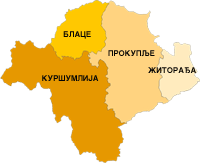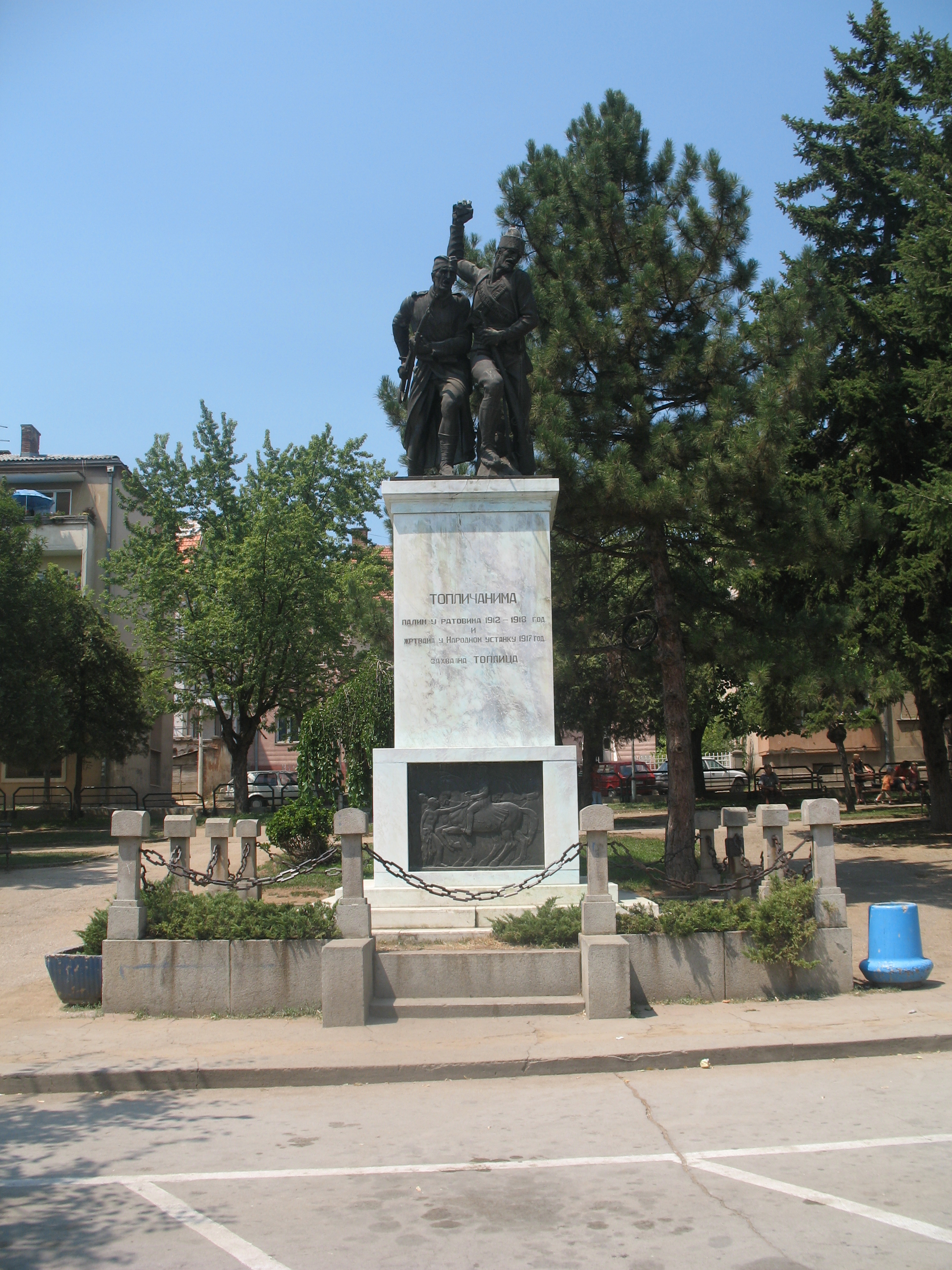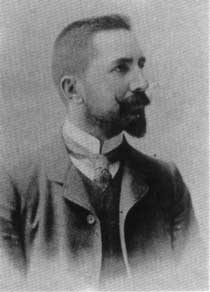|
Surdulica Massacre
The Surdulica massacre was the mass murder of Serbian men by Bulgarian occupational authorities in the southern Serbian town of Surdulica in 1916 and early 1917, during World War I. Members of the Serbian intelligentsia in the region, mostly functionaries, teachers, priests and former soldiers, were detained by Bulgarian forces—ostensibly so that they could be deported to the Bulgarian capital, Sofia—before being taken into the forests around Surdulica and killed. An estimated 2,000–3,000 Serbian men were executed by the Bulgarians in the town and its surroundings. Witnesses to the massacre were interviewed by American writer William A. Drayton in December 1918 and January 1919. Background Austria-Hungary declared war on Serbia on 28 July, marking the beginning of World War I. Serbia was invaded by a combined German and Austro-Hungarian force on 7 October 1915. On 14 October, the Kingdom of Bulgaria declared war on Serbia and invaded the country from the east. The Serbian Ar ... [...More Info...] [...Related Items...] OR: [Wikipedia] [Google] [Baidu] |
World War I
World War I (28 July 1914 11 November 1918), often abbreviated as WWI, was one of the deadliest global conflicts in history. Belligerents included much of Europe, the Russian Empire, the United States, and the Ottoman Empire, with fighting occurring throughout Europe, the Middle East, Africa, the Pacific, and parts of Asia. An estimated 9 million soldiers were killed in combat, plus another 23 million wounded, while 5 million civilians died as a result of military action, hunger, and disease. Millions more died in genocides within the Ottoman Empire and in the 1918 influenza pandemic, which was exacerbated by the movement of combatants during the war. Prior to 1914, the European great powers were divided between the Triple Entente (comprising France, Russia, and Britain) and the Triple Alliance (containing Germany, Austria-Hungary, and Italy). Tensions in the Balkans came to a head on 28 June 1914, following the assassination of Archduke Franz Ferdin ... [...More Info...] [...Related Items...] OR: [Wikipedia] [Google] [Baidu] |
Toplica District
The Toplica District ( sr, Топлички округ, Toplički okrug, ) is an administrative district in southern Serbia, named after the river Toplica. With a population of 91,754, it has the smallest population of all Serbian districts. Its administrative center is the city of Prokuplje. Municipalities It encompasses the city of Prokuplje and three municipalities: * Blace * Kuršumlija * Žitorađa Demographics According to the last official census done in 2011, Toplica District has 91,754 inhabitants. Most of its population is of Serb ethnicity (93.46%) while 50.02% of the municipality’s population is urban. Ethnic composition of the municipality: See also * Administrative divisions of Serbia * Districts of Serbia An ''okrug'' is one of the first-level administrative divisions of Serbia, corresponding to a "district" in many other countries (Serbia also has two autonomous provinces at a higher level than districts). The term ''okrug'' (pl. ''okruzi)'' ... ... [...More Info...] [...Related Items...] OR: [Wikipedia] [Google] [Baidu] |
Macedonia (region)
Macedonia () is a geographical and historical region of the Balkan Peninsula in Southeast Europe. Its boundaries have changed considerably over time; however, it came to be defined as the modern geographical region by the mid 19th century. Today the region is considered to include parts of six Balkan countries: larger parts in Greece, North Macedonia North Macedonia, ; sq, Maqedonia e Veriut, (Macedonia before February 2019), officially the Republic of North Macedonia,, is a country in Southeast Europe. It gained independence in 1991 as one of the successor states of Socialist Feder ..., and Bulgaria, and smaller parts in Albania, Serbia, and Kosovo. It covers approximately and has a population of 4.76 million. Its oldest known settlements date back approximately to 7,000 BC. From the middle of the 4th century BC, the Kingdom of Macedon became the dominant power on the Balkan Peninsula; since then Macedonia has had a diverse history. Etymology Both proper nouns ... [...More Info...] [...Related Items...] OR: [Wikipedia] [Google] [Baidu] |
Vranje
Vranje ( sr-Cyrl, Врање, ) is a city in Southern Serbia and the administrative center of the Pčinja District. The municipality of Vranje has a population of 83,524 and its urban area has 60,485 inhabitants. Vranje is the economical, political and cultural centre of the Pčinja District in Southern Serbia. It is the first city from the Balkans to be declared UNESCO city of Music. It is located on the Pan-European Corridor X, close to the borders with North Macedonia and Bulgaria. The Serbian Orthodox Eparchy of Vranje is seated in the city, as is the 4th Land Force Brigade of the Serbian Army. Etymology The toponym Vranje is first attested in an 11th-century Byzantine text. The town's name is believed to be derived from ''vran'', a word of Slavic origin meaning swarthy or dark, or the archaic Slavic given name Vran, which itself is derived from the same word. History The Romans conquered the region in the 2nd or 1st centuries BC. Vranje was part of Moesia Superior and ... [...More Info...] [...Related Items...] OR: [Wikipedia] [Google] [Baidu] |
Komitadji
Komitadji, Comitadjis, or Komitas (Bulgarian, Macedonian and sr, Комити, Serbian Latin: ''Komiti'', ro, Comitagiu, gr, Κομιτατζής, plural: Κομιτατζήδες, tr, Komitacı, sq, Komit) means in Turkish "committee members". It refers to members of rebel bands ( chetas) operating in the Balkans during the final period of the Ottoman Empire. They fought against the Turkish authorities and were supported by the governments of the neighbouring states, especially Bulgaria. Komitadji was used to describe the members of the Bulgarian Revolutionary Central Committee during the April uprising in 1876, and Bulgarian bands during the following Russo-Turkish War. The term is often employed to refer later to groups of rebels associated with the Bulgarian Macedonian-Adrianople Revolutionary Committees and the Supreme Macedonian-Adrianople Committee called by the Turks simply the ''Bulgarian Committees''. In interwar Greece and Yugoslavia the term was used to refer ... [...More Info...] [...Related Items...] OR: [Wikipedia] [Google] [Baidu] |
11th Army (German Empire)
The 11th Army (german: 11. Armee / Armeeoberkommando 11 / A.O.K. 11) was an army level command of the German Army in World War I. It was formed in March 1915 in Kassel originally to serve on the Western Front but was transported to Galicia for service on the Eastern Front. The army was dissolved on 8 September 1915, but reformed on 23 September 1915 for the Serbian Campaign. It was finally dissolved on 7 January 1919. History The 11th Army was formed in early 1915. It briefly fought on the Western Front during the Battle of Ypres, holding the line against the Allied attack. On 22 April, it was transferred and placed with the Austrian 4th Army under Mackensen's command, behind the Gorlice–Tarnow gap, south of the Vistula River. In July 1915, the 11th Army advanced into Russian territory in a general German offensive. The 11th Army was dissolved on 8 September 1915. On 23 September 1915 a new 11th Army was created for the Serbian Campaign under command of Max von Gallwit ... [...More Info...] [...Related Items...] OR: [Wikipedia] [Google] [Baidu] |
Andrej Mitrović
Andrej Mitrović ( sr-cyr, Андреј Митровић; 17 April 1937 – 25 August 2013) was a Serbian historian, professor and author. A specialist of the contemporary history of Serbia and Yugoslavia, Mitrović served as head of the Contemporary History Department at the Faculty of Philosophy, University of Belgrade. Throughout the years he wrote extensively about the First World War, the Paris Peace Conference, interwar Europe as well as articles on economic, social, cultural history and historiography. One of the leading Serbian historians of the 20th century, he was an honorary member of the Serbian Academy of Science and Arts, a member of the Montenegrin Academy of Sciences and Arts, and the recipient of several prestigious awards. Early life and education Andrej Mitrović was born in Kragujevac on 17 April 1937, he completed elementary and secondary school in Kragujevac. Mitrović graduated in history from the Faculty of Philosophy, University of Belgrade, earning ... [...More Info...] [...Related Items...] OR: [Wikipedia] [Google] [Baidu] |
Kosovo
Kosovo ( sq, Kosova or ; sr-Cyrl, Косово ), officially the Republic of Kosovo ( sq, Republika e Kosovës, links=no; sr, Република Косово, Republika Kosovo, links=no), is a partially recognised state in Southeast Europe. It lies at the centre of the Balkans. Kosovo unilaterally declared its independence from Serbia on 17 February 2008, and has since gained diplomatic recognition as a sovereign state by 101 member states of the United Nations. It is bordered by Serbia to the north and east, North Macedonia to the southeast, Albania to the southwest, and Montenegro to the west. Most of central Kosovo is dominated by the vast plains and fields of Dukagjini and Kosovo field. The Accursed Mountains and Šar Mountains rise in the southwest and southeast, respectively. Its capital and largest city is Pristina. In classical antiquity, the central tribe which emerged in the territory of Kosovo were Dardani, who formed an independent polity known as th ... [...More Info...] [...Related Items...] OR: [Wikipedia] [Google] [Baidu] |
Bosilegrad
Bosilegrad ( sr-cyr, Босилеград; bg, Босилеград) is a town and municipality located in the Pčinja District of southern Serbia. The municipality comprises an area of . According to 2011 census, town has a population of 2,624 inhabitants, while the municipality has 8,129 inhabitants. Along with Dimitrovgrad (Tsaribrod), Bosilegrad is an economic and cultural centre of Serbia's ethnic Bulgarian community. History Historically, Bosilegrad was part of Bulgaria. On May 15, 1917, Serbian paramilitaries (Chetniks) under the command of Kosta Pećanac crossed the old Bulgarian border and, as part of the Toplica Uprising, they captured Bosilegrad, which they then burned. Then Pećanac and his band withdrew to Kosovo, which was controlled by the Austro-Hungarian Army. The Kingdom of Serbs, Croats and Slovenes gained some territory from Bulgaria as part of the Treaty of Neuilly-sur-Seine, following the invasion and occupation of part of the Kingdom of Serbia by Bu ... [...More Info...] [...Related Items...] OR: [Wikipedia] [Google] [Baidu] |
Kuršumlija
Kuršumlija ( sr-Cyrl, Куршумлија, ) is a town and municipality located in the Toplica District of the southern Serbia. It is situated near the rivers Toplica, Kosanica and Banjska, southeast of Mount Kopaonik and northwest of Mount Radan. As of 2011, the town has 13,306 inhabitants, while municipality has 19,213. Geography Kuršumlija sits on the area of and administratively is in Toplica District. Its borders the municipalities of Brus, Blace, Prokuplje, Medveđa, Podujevo, and Leposavić. Its southwest border (105 km) is within the disputed territory of Kosovo. History The Romans established the Ad Fines military outpost in the 3rd century AD. There are also remains of churches from the Byzantine period. The Serbian principality of Rascia expanded from this region. Stefan Nemanja, a Serbian lord (župan), and the founder of Nemanjić dynasty, built his residence here, as well as the two monasteries of St Nicolas and the Holy Mother of God (before 1168) ... [...More Info...] [...Related Items...] OR: [Wikipedia] [Google] [Baidu] |
Prokuplje
Prokuplje ( sr-cyrl, Прокупље, ) is a city and the administrative center of the Toplica District in southern Serbia. According to 2011 census, the city urban area has a population of 27,333 inhabitants, while the administrative area has 44,419 inhabitants. Prokuplje is one of the Roman sites of Serbia. The town was known as Ürgüp during Ottoman rule and was incorporated into the Kingdom of Serbia in 1878. Geography Prokuplje is located between municipalities of Blace, Kuršumlija, Bojnik, Žitorađa, Merošina, Aleksinac, and Kruševac. Climate Prokuplje has an warm-summer mediterranean climate (Köppen climate classification: ''Cwb'') that's close to a humid subtropical climate (Köppen climate classification: ''Cfa''). History and archaeology Neolithic and Copper Age The traces of early settlements can be found at Neolithic sites such as Macina (near Zitni Potok), Kavolak west of Prokuplje (village Donja Trnava) and settlements on the south slopes of Jast ... [...More Info...] [...Related Items...] OR: [Wikipedia] [Google] [Baidu] |
Internal Macedonian Revolutionary Organisation
The Internal Macedonian Revolutionary Organization (IMRO; bg, Вътрешна Македонска Революционна Организация (ВМРО), translit=Vatrešna Makedonska Revoljucionna Organizacija (VMRO); mk, Внатрешна Македонска Револуционерна Организација, translit=Vnatrešna Makedonska Revolucionerna Organizacija), was a secret revolutionary society founded in the Ottoman territories in Europe, that operated in the late 19th and early 20th centuries. Founded in 1893 in Salonica, initially, it aimed to gain autonomy for Macedonia (region), Macedonia and Adrianople Vilajet, Adrianople regions in the Ottoman Empire, however, later it became an agent serving Kingdom of Bulgaria, Bulgarian interests in Balkan politics. IMRO group modeled itself after the Internal Revolutionary Organization of Vasil Levski and accepted its motto "Freedom or Death" (Свобода или смърть). Starting in 1896 it fought t ... [...More Info...] [...Related Items...] OR: [Wikipedia] [Google] [Baidu] |


.jpg)


